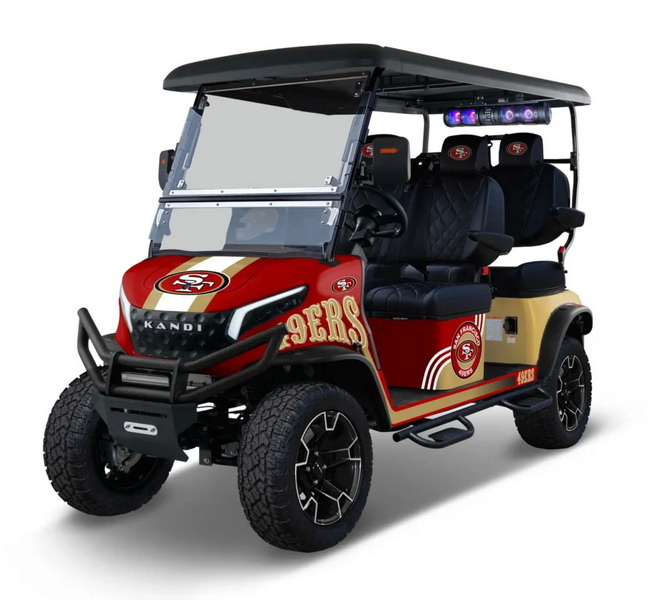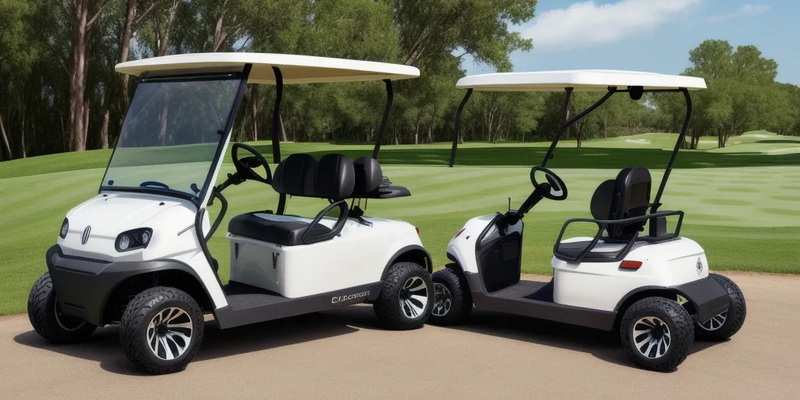Content Menu
● Understanding Electric Golf Cart Components
● Common Causes of Surging
>> Faulty Throttle or Accelerator Pedal
>> Battery Issues
>> Motor Malfunction
>> Speed Controller Problems
>> Wiring Issues
● How to Diagnose Surging Issues
● Preventative Maintenance Tips
● Conclusion
● Related Questions
>> 1. What are common symptoms of an electric golf cart that is surging?
>> 2. How often should I check my golf cart's batteries?
>> 3. Can I fix surging issues myself?
>> 4. What maintenance should I perform regularly on my electric golf cart?
>> 5. How do I know if my speed controller is faulty?
Electric golf carts are a popular choice for leisurely rides on golf courses and in communities. However, like any vehicle, they can experience issues that affect their performance. One common problem is surging, where the cart unexpectedly accelerates or decelerates. Understanding the causes of this issue is crucial for maintaining a smooth and safe ride.

Understanding Electric Golf Cart Components
Before diving into the causes of surging, it's essential to understand the primary components of an electric golf cart:
- Battery: Provides power to the motor.
- Motor: Converts electrical energy into mechanical energy to drive the cart.
- Controller: Regulates the power flow from the battery to the motor based on input from the accelerator pedal.
- Throttle/Potentiometer: Measures how far down the accelerator pedal is pressed and sends this information to the controller.
Common Causes of Surging
Faulty Throttle or Accelerator Pedal
One of the most common reasons for surging is a malfunction in the throttle or accelerator pedal. If the throttle sends inconsistent signals to the motor, it can cause erratic acceleration. This issue may arise from:
- Dirt or debris in the throttle mechanism
- Wear and tear on the potentiometer
- Loose connections or damaged wiring
Battery Issues
The battery is another critical component that can lead to surging problems. If the battery is old, undercharged, or has a weak cell, it may not supply consistent voltage. Signs of battery issues include:
- Corrosion on terminals
- Low water levels in lead-acid batteries
- Inability to hold a charge
Motor Malfunction
A malfunctioning motor can also cause surging. If there are issues such as worn brushes or internal damage, the motor may not operate smoothly. Regular maintenance can help prevent these problems.

Speed Controller Problems
The speed controller plays a vital role in regulating power delivery from the battery to the motor. If it malfunctions, it can cause erratic speed changes. Common issues include:
- Loose connections
- Burnt-out components
- Software glitches in advanced controllers
Wiring Issues
Faulty wiring can lead to inconsistent power flow, resulting in surging. Inspecting all wiring connections for signs of wear, corrosion, or damage is essential for maintaining optimal performance.

How to Diagnose Surging Issues
Diagnosing surging problems involves a systematic approach:
1. Visual Inspection: Check for loose wires, corrosion on battery terminals, and physical damage to components.
2. Battery Testing: Use a voltmeter to measure battery voltage and ensure it meets specifications.
3. Throttle Check: Inspect the throttle mechanism for dirt and ensure it moves freely without obstruction.
4. Controller Examination: Look for any visible signs of damage or burnt components in the speed controller.
5. Motor Testing: If possible, test the motor with a separate power source to determine if it functions correctly.
Preventative Maintenance Tips
To avoid surging and other issues with your electric golf cart, consider these maintenance tips:
- Regularly check and maintain battery water levels.
- Clean battery terminals with a mixture of baking soda and water to prevent corrosion.
- Inspect wiring and connections periodically for signs of wear.
- Keep the throttle mechanism clean and free from debris.
- Schedule regular professional inspections to catch potential issues early.
Conclusion
Surging in electric golf carts can be frustrating but understanding its causes can help you maintain your vehicle effectively. Regular maintenance and timely diagnosis of issues related to the throttle, battery, motor, speed controller, and wiring are essential for ensuring a smooth ride.

Related Questions
1. What are common symptoms of an electric golf cart that is surging?
Common symptoms include erratic acceleration, sudden deceleration, and inconsistent speed while driving.
2. How often should I check my golf cart's batteries?
It's advisable to check your batteries at least once a month for water levels and terminal corrosion.
3. Can I fix surging issues myself?
Many minor issues can be fixed by inspecting components like batteries and wiring; however, complex problems may require professional assistance.
4. What maintenance should I perform regularly on my electric golf cart?
Regular maintenance includes checking battery water levels, cleaning terminals, inspecting wiring, and ensuring all mechanical parts function correctly.
5. How do I know if my speed controller is faulty?
Signs of a faulty speed controller include erratic speed changes, failure to accelerate properly, and unusual noises coming from the controller area.











































